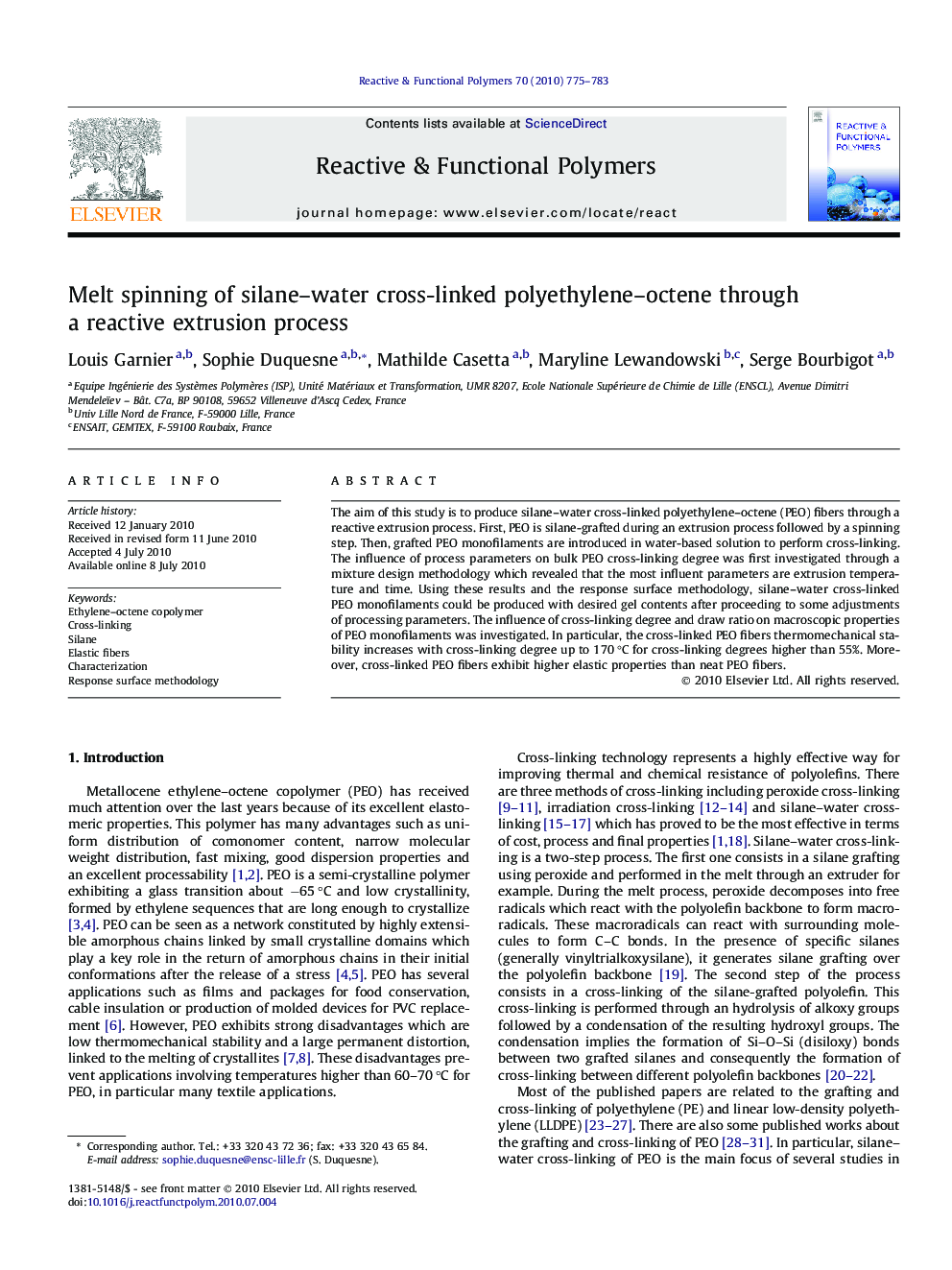| Article ID | Journal | Published Year | Pages | File Type |
|---|---|---|---|---|
| 5210623 | Reactive and Functional Polymers | 2010 | 9 Pages |
Abstract
The aim of this study is to produce silane-water cross-linked polyethylene-octene (PEO) fibers through a reactive extrusion process. First, PEO is silane-grafted during an extrusion process followed by a spinning step. Then, grafted PEO monofilaments are introduced in water-based solution to perform cross-linking. The influence of process parameters on bulk PEO cross-linking degree was first investigated through a mixture design methodology which revealed that the most influent parameters are extrusion temperature and time. Using these results and the response surface methodology, silane-water cross-linked PEO monofilaments could be produced with desired gel contents after proceeding to some adjustments of processing parameters. The influence of cross-linking degree and draw ratio on macroscopic properties of PEO monofilaments was investigated. In particular, the cross-linked PEO fibers thermomechanical stability increases with cross-linking degree up to 170 °C for cross-linking degrees higher than 55%. Moreover, cross-linked PEO fibers exhibit higher elastic properties than neat PEO fibers.
Keywords
Related Topics
Physical Sciences and Engineering
Chemistry
Organic Chemistry
Authors
Louis Garnier, Sophie Duquesne, Mathilde Casetta, Maryline Lewandowski, Serge Bourbigot,
